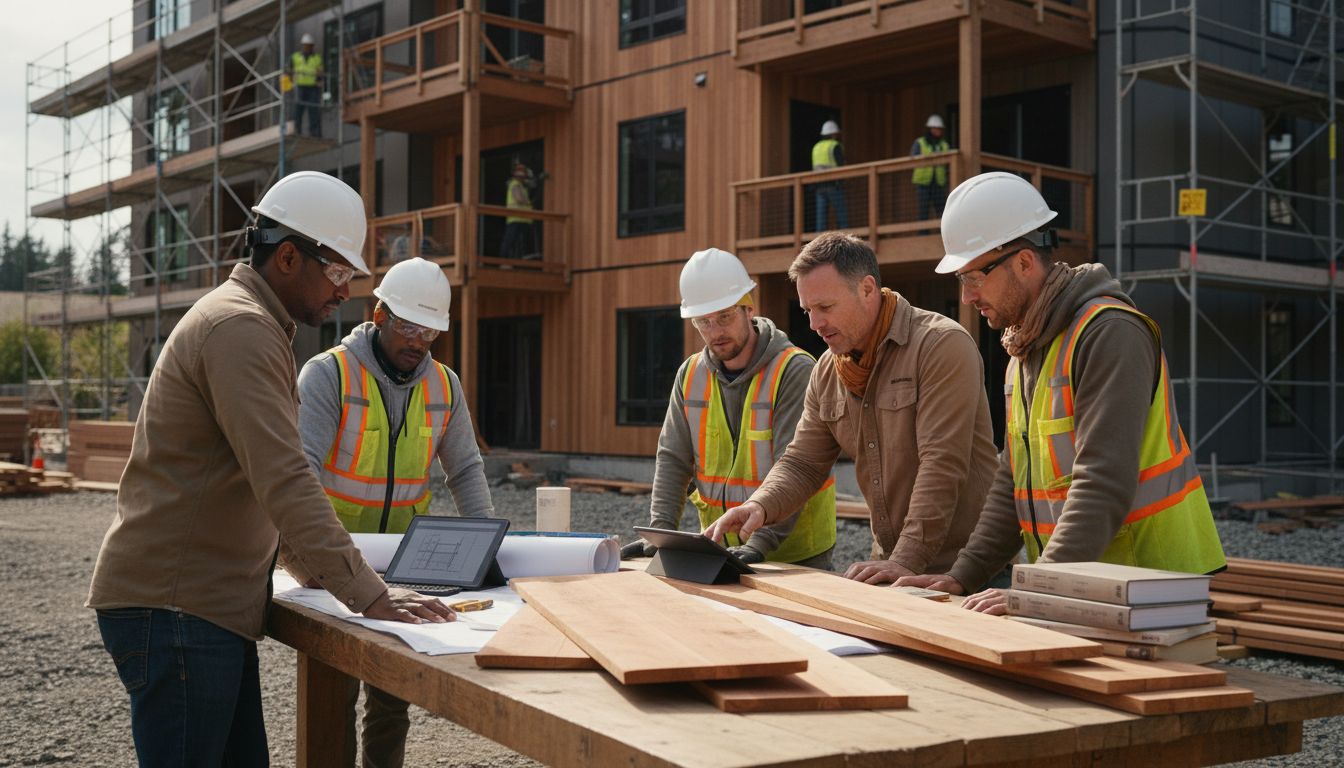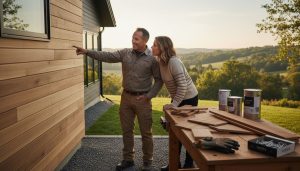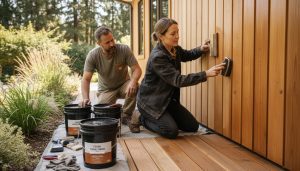Did you know that Western Red Cedar can naturally meet many building code requirements without heavy chemical treatments? For construction professionals, choosing materials that align with strict safety and performance standards is not just about looks. Cedar stands out for its resistance to decay, moisture, and insects, making it a reliable option where compliance and long-term durability matter most.
Table of Contents
- Defining Cedar’s Role in Building Codes
- Regulatory Standards for Cedar Usage
- Fire, Structural, and Environmental Ratings
- Approved Applications and Regional Variations
- Compliance, Certification, and Common Pitfalls
Key Takeaways
| Point | Details |
|---|---|
| Cedar’s Natural Compliance | Western Red Cedar meets many building code requirements through its inherent properties, making it a preferred choice for architects and builders. |
| Structural and Environmental Performance | Cedar demonstrates exceptional resistance to decay, fire, and moisture, ensuring longevity and compliance with stringent safety standards. |
| Importance of Documentation | Accurate compliance documentation is crucial for project approval; failure to provide proper certification can lead to delays or non-acceptance of construction plans. |
| Regional Variations | Building codes vary by region; professionals must adapt cedar usage to meet local regulations and environmental considerations for successful applications. |
Defining Cedar’s Role in Building Codes
Building codes serve as critical guidelines that ensure structural integrity, safety, and performance of construction materials. Western Red Cedar plays a unique and respected role in these regulatory frameworks, offering architects and builders a naturally compliant material for numerous exterior and interior applications. Unlike synthetic alternatives, cedar inherently meets multiple building code requirements through its structural and environmental characteristics.
Cedar’s performance in building codes centers around several key attributes. The wood demonstrates exceptional natural resistance to decay, moisture penetration, and insect damage – qualities that directly align with strict building safety standards. Builders appreciate cedar’s ability to meet fire resistance classifications, dimensional stability, and thermal insulation properties without requiring extensive chemical treatments. Premium Red Cedar Deck Boards showcase how natural wood can seamlessly integrate technical compliance with aesthetic design.
Regulatory compliance for cedar involves multiple assessment criteria. Building codes evaluate wood materials based on structural performance, moisture resistance, thermal conductivity, and environmental sustainability. Western Red Cedar consistently passes these rigorous evaluations, making it a preferred choice for exterior cladding, roofing, decking, and structural framing. Its natural cellular structure provides inherent advantages that synthetic materials struggle to replicate, offering builders a reliable and code-compliant solution.
Professionals working in construction understand that material selection goes beyond aesthetic preferences. Building code compliance represents a critical factor in project approval, insurance requirements, and long-term structural performance. Cedar’s natural properties position it as a material that not only meets but often exceeds standard building code expectations, providing peace of mind for architects, builders, and property owners alike.
Regulatory Standards for Cedar Usage
Building codes establish comprehensive guidelines that dictate how construction materials like cedar can be utilized in various architectural and structural applications. Black Label Wood emphasizes that cedar must meet specific durability and treatment standards to ensure safety and longevity in construction projects. These regulatory standards are not merely suggestions but mandatory requirements that manufacturers, builders, and architects must carefully follow.
The regulatory framework for cedar usage encompasses multiple critical assessment criteria. Structural integrity remains a primary concern, with building codes mandating rigorous testing for load-bearing capacity, moisture resistance, and dimensional stability. Cedar must demonstrate consistent performance across various environmental conditions, including temperature fluctuations, humidity levels, and potential exposure to extreme weather. Ultimate Shiplap Western Red Cedar Cladding exemplifies how specialized cedar products are designed to meet these stringent regulatory requirements.
Key regulatory standards for cedar typically involve comprehensive evaluations of material properties. These assessments include fire resistance classifications, thermal performance, structural strength, and environmental sustainability.
Here’s a summary of key regulatory standards for cedar usage:
| Assessment Criteria | Description | Importance in Codes |
|---|---|---|
| Structural Integrity | Load-bearing, dimensional stability | Ensures safety & durability |
| Moisture Resistance | Performance under humidity/rain | Prevents rot & damage |
| Fire Resistance | Flame spread index, treated or natural | Protects against fire risks |
| Thermal Performance | Insulation capability | Improves energy efficiency |
| Environmental Sustainability | Renewable, biodegradable material | Supports green building |
Professionals in construction understand that navigating these regulatory standards requires expert knowledge and careful material selection. Compliance documentation plays a crucial role, with manufacturers typically providing detailed technical specifications that demonstrate how their cedar products meet or exceed building code requirements. This documentation becomes essential during building inspections, permit applications, and potential insurance assessments, providing concrete evidence of the material’s suitability for specific construction applications.
Fire, Structural, and Environmental Ratings
Cedar’s performance in building codes extends far beyond basic material requirements, with specialized ratings that demonstrate its exceptional capabilities across critical safety and environmental metrics. Tropical Forest Products reveals that cedar’s fire resistance can be significantly enhanced through specialized treatments, achieving a flame spread index of 25 or less, which meets the stringent NFPA Class A standards. This remarkable fire performance positions cedar as a preferred material for construction professionals prioritizing safety.
Fire ratings represent a crucial aspect of material evaluation in building codes. Modinex highlights that when treated with advanced solutions like Fireshield, western red cedar can achieve a Group 1 fire rating, making it suitable for external applications where fire resistance is paramount. These treatments transform cedar from a naturally combustible material into a highly fire-resistant solution, providing builders with increased flexibility and safety options in design and construction.
Structural ratings assess cedar’s performance under various environmental stresses, including load-bearing capacity, dimensional stability, and resistance to moisture and temperature fluctuations. Building codes mandate comprehensive testing to ensure that cedar maintains its structural integrity across diverse conditions. The material’s natural cellular structure provides inherent advantages, allowing it to expand and contract with environmental changes while maintaining its core structural characteristics. This adaptability makes cedar an ideal choice for projects requiring long-term performance and reliability.
Environmental ratings further distinguish cedar as a sustainable building material. Unlike synthetic alternatives, cedar offers exceptional environmental credentials, including biodegradability, renewable sourcing, and minimal processing requirements. Building codes increasingly recognize the importance of sustainable materials, and cedar’s natural properties align perfectly with these evolving environmental standards. Architects and builders can confidently specify cedar, knowing it not only meets technical performance requirements but also contributes to more environmentally responsible construction practices.
Approved Applications and Regional Variations
Cedar’s versatility in construction allows for diverse applications across different architectural and environmental contexts. Tropical Forest Products confirms that cedar is specifically approved for exterior applications like decking and siding, provided it meets stringent durability requirements established by building codes. These approvals are not blanket permissions but carefully evaluated endorsements based on comprehensive performance assessments.
Regional building codes introduce fascinating variations in cedar’s approved usage. ICPALD highlights an intriguing example from Kenya, where cedar specifications require additional treatments to prevent insect attacks and mandate precise moisture content controls. These regional nuances underscore the importance of understanding local building regulations, as requirements can significantly differ between geographical locations, climate zones, and specific construction contexts.
Approved applications typically encompass a wide range of construction scenarios. Builders can utilize cedar in residential and commercial projects, including exterior cladding, roofing, decking, interior framing, and architectural detailing. Each application requires careful consideration of local building codes, which may impose specific requirements regarding treatment, installation methods, and performance standards. Professionals must navigate these complex regulatory landscapes, ensuring that cedar meets not just national standards but also local municipal and regional building code specifications.
Understanding regional variations demands a comprehensive approach. Building code compliance is not a static concept but a dynamic process that requires continuous education and adaptation. Architects, builders, and designers must stay informed about evolving regulations, regional environmental considerations, and specific treatment requirements. Ultimate TG&S Western Red Cedar Cladding represents an excellent example of how modern cedar products are designed to meet these diverse and complex regulatory requirements, offering flexibility and reliability across different construction contexts.
Compliance, Certification, and Common Pitfalls
Navigating the complex landscape of building code compliance requires meticulous attention to documentation and material selection. Tropical Forest Products emphasizes that compliance often hinges on obtaining critical documentation like an ICC-ES report, which verifies that cedar products meet minimum regulatory standards. These certification processes serve as crucial gatekeepers, ensuring that construction materials meet rigorous performance and safety requirements.
Documentation requirements represent a critical aspect of building code adherence. Black Label Wood warns about significant common pitfalls, particularly the use of untreated sapwood, which is considered non-durable and potentially compromises structural integrity. Professionals must carefully distinguish between heartwood and sapwood, understanding that not all cedar sections are equal in terms of durability and code compliance.
Certification processes involve comprehensive evaluations of material properties, including structural performance, moisture resistance, and long-term durability. Builders and architects must maintain detailed records demonstrating that cedar materials have been properly sourced, treated, and tested. This documentation becomes crucial during building inspections, where inspectors thoroughly review material specifications, treatment processes, and compliance evidence. Incomplete or inadequate documentation can result in project delays, additional testing requirements, or even outright rejection of construction plans.
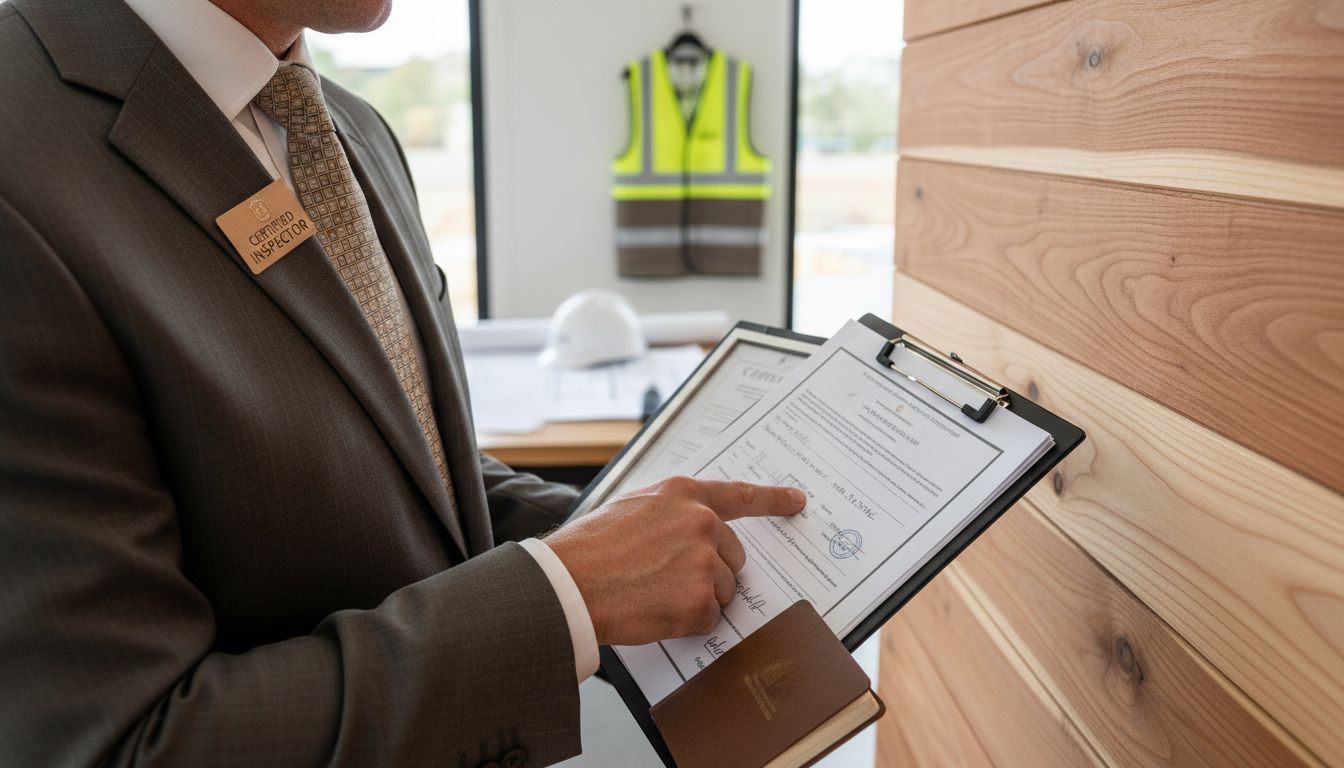
Proactive risk management is essential in navigating building code compliance. Potential pitfalls extend beyond documentation, encompassing installation techniques, treatment processes, and ongoing maintenance. Ultimate TG&S Western Red Cedar Cladding demonstrates how modern cedar products are designed to minimize compliance risks by providing comprehensive technical specifications and guidance. Professionals must stay informed about evolving building codes, invest in continuous education, and maintain rigorous quality control processes to successfully navigate the complex regulatory landscape of cedar construction.
Unlock Building Code Confidence with Premium Western Red Cedar
Navigating the complex world of building codes can be overwhelming, especially when your projects demand materials that naturally meet strict structural, fire, and environmental standards. The article highlights critical challenges like ensuring fire resistance, moisture durability, and compliance documentation when selecting cedar. At the same time, you want to avoid pitfalls such as untreated sapwood and regional code variances that can jeopardize your project’s approval and longevity.
Choose a timber solution that eliminates guesswork and elevates your confidence. Our carefully sourced Canadian Western Red Cedar is naturally durable, sustainably harvested, and crafted to meet or exceed building code requirements for decking, cladding, and framing. Discover the difference of cedar products designed with code compliance and superior performance in mind.
Experience why architects, builders, and homeowners rely on RedCedarRetail.com for timber that stands up to scrutiny and adds timeless beauty.
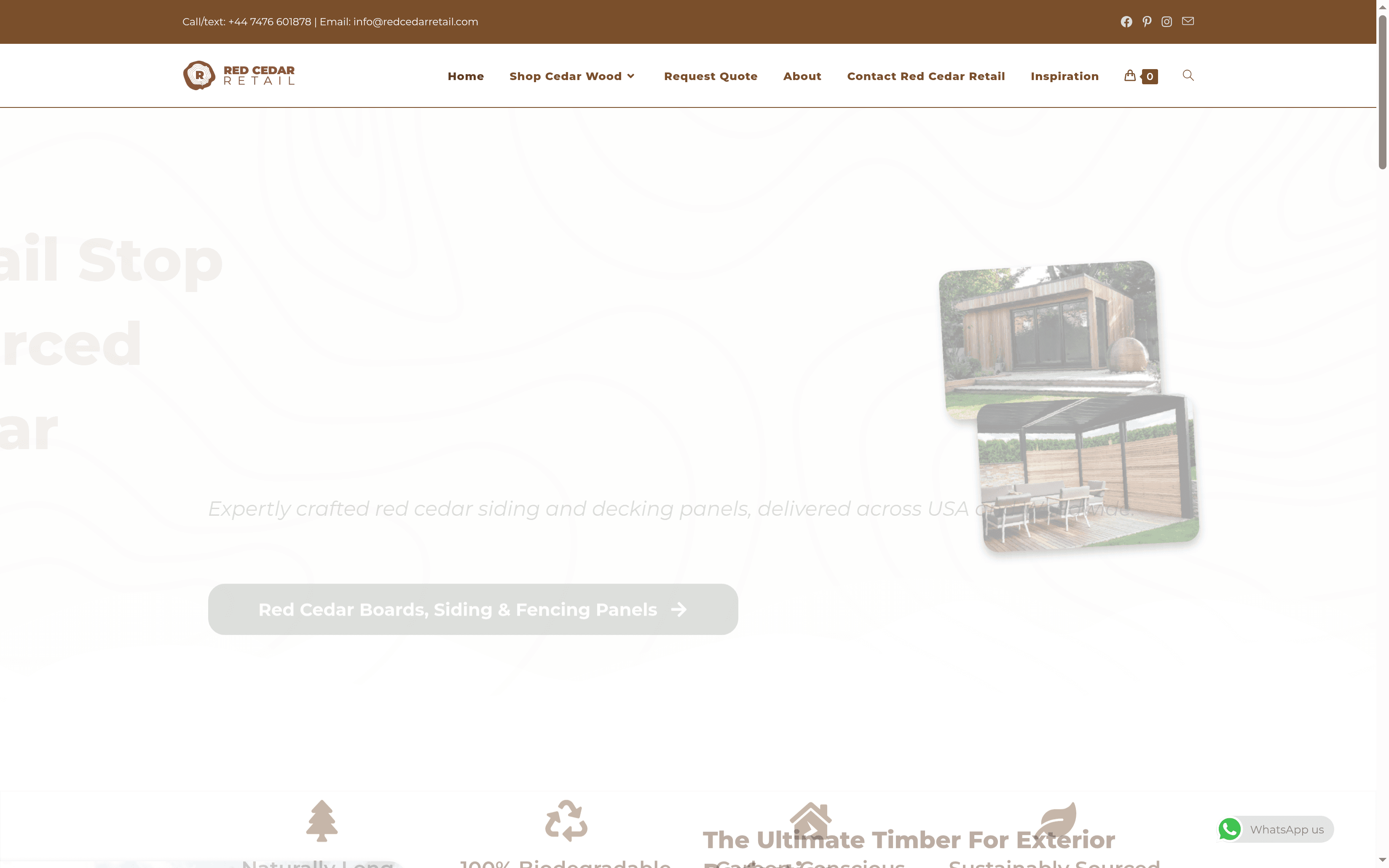
Ready to build with cedar you can trust in every regulatory environment Visit RedCedarRetail.com now to explore our selection of premium decking boards, cladding options, and custom profiles. Secure your project’s success with materials proven to meet critical code standards—order today and get expert guidance from our team dedicated to your perfect build.
Frequently Asked Questions
What are the key attributes of cedar that make it compliant with building codes?
Cedar is naturally resistant to decay, moisture, and insects, making it suitable for compliance with safety standards. Its dimensional stability and fire resistance characteristics also help cedar meet various building code requirements.
How does cedar’s fire resistance classification benefit construction projects?
Cedar can achieve a flame spread index of 25 or less with specialized treatments, meeting NFPA Class A standards. This makes cedar a safer choice for applications requiring strict fire resistance.
What documentation is essential for ensuring cedar complies with building codes?
Obtaining an ICC-ES report and maintaining detailed records of material sourcing, treatment, and testing is crucial for demonstrating compliance during inspections and permit applications.
What common pitfalls should builders avoid when using cedar in construction?
Builders should avoid using untreated sapwood, which is less durable. Additionally, ensuring proper documentation and understanding treatment processes are vital to prevent compliance issues.

